mdocod
Flashaholic
Shootout Summer 09, oh yea!

Some information about the shootout:
I have included various information about each bulb, here's how it al breaks down...
peak lux @1M: This is the highest lux value I can find within the central beam. This is useful for determining what applications the lamp may be suitable for. Most importantly, what range the lamp will effectively illuminate targets at.
central beam angle: A rough idea of the angle of the beam, produced by taking measurements on the wall and using trig to solve for the angle. This is not an exact science as everyone would have a different definition of where the beam begins and ends (all tested here have some "soft" transition due to the textured reflectors involved). Some are listed as a "range" where I couldn't decide. This is useful for picking applications for particular lamps. Narrower beams reveal less about what's going on around you, but will reach out and touch things, wider beams are usually better at close range, and medium range if they have enough oomf behind them.
spill lux: This is a lux measurement taken well off to the side of any of the central beams, at the same angle-off-center and position in each lamps test. This data helps one determine about how much intensity there is in the spill beam. As it would turn out, when this statistic is compared from lamp to lamp with the same spill beam angle (see below), and same light source (incan or LED), and similar reflector coatings, it is somewhat representative of relative total output form the lamp.
spill beam angle: This just has to do with the shape of the reflector and the bulb position within it. The wide circuit of spill light emitted by most flashlights comes in different variations, and some people my prefer wider or narrower spill beams depending on application. Most incan tactical lamps are about the same, with 2 dramatic exceptions: the E series and M3 (Z46) series of lamps.
Relative Overall Output: (Coming Soon!) I'm brainstorming some ways to make a light-box that performs the all important function of eliminating the effect of beam shape or intensity on results. I will know I have succeeded when 2 bulbs in different reflectors generate the same results in the box.
Below that you will find a series of beam shots on a "white wall." The purpose of these shots is mostly just to help illustrate the shape of the beam. The shots are taken at 1/[email protected], 1/[email protected], 1/[email protected], 1/[email protected] respectively. Looking at the shots and taking in information from different exposure setting can be revealing about how intense the beam is, or how soft the transition is, or if it's oval or round, etc etc etc.
Enjoy!
-----------------
SureFire E2E w/MN03
(on 2x SureFire CR123s, relatively fresh cells)
peak lux @~1M: ~1900
central beam angle: ~13°
Spill Lux: ~10
spill beam angle: ~100°
Relative Overall Output: (Coming Soon!)
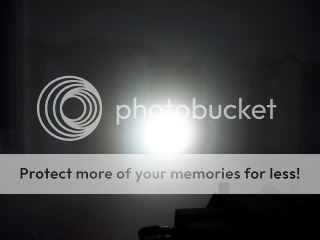



Comments: Surprisingly tight beam considering small reflector, tighter than a P60, which is strange. Spill beam on the E2E with the shallow reflector is extremely wide. Wider than any flashlight I have used to date. Very useful and a nice change of pace from the usual beam patterns of flashlights. The very wide spill carries over to after-market lamps as well. While the on-paper numbers are lower, I prefer this in actual use over a P60 any day, indoors or outside.
-----------------
LumensFactory HO-E2R
(on 2x AWIMR16340s @4.10V+/-0.07V)
peak lux @~1M: ~900
central beam angle: ~17°
Spill lux: ~15
spill beam angle: ~100°
Relative Overall Output: (Coming Soon!)


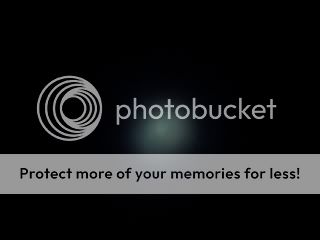

*Note: Electrical contact on some LF "E" series bulbs will require a thin shim installed over the front of the bulb housing.
Floody central beam produces less than thrilling throw performance, but the beam is more thoroughly filled out, compared with the other E2E lamps that have a tight center that fades to the edge. So, the lux figures here are a bit misleading.
-----------------
LumensFactory EO-E2R
(on 2x AWIMR16340s @4.10V+/-0.07V)
peak lux @~1M: ~2400
central beam angle: ~15°
spill lux: ~16
spill beam angle: ~100°
Relative Overall Output: (Coming Soon!)




*Note: Electrical contact on some LF "E" series bulbs will require a thin shim installed over the front of the bulb housing.
Beam pattern and style here is very similar to the stock MN03, just a slightly brighter overall performance here. This would be the lamp to go to if you like the MN03 but want to move to a rechargeable configuration.
-----------------
LumensFactory IMR-E2
(on 2xAWIMR16340 cells @4.10V+/-0.07V)
peak lux @~1M: ~4100
central beam angle: ~15-20°
spill lux: ~23
spill beam angle: ~100°
Relative Overall Output: (Coming Soon!)




Comments: Peak lux here isn't exactly great compared with larger hosted options, but that is to be expected when cramming such a large filament into such a small reflector. Of course, we are working with the shallow reflector of the E2E here that produces the massive spill angle with less of the total lumens being focused into that central beam. The central beam profile is also pretty floody but does reach out surprisingly well. This is a fun lamp to own and use overall. A dark section of newspaper placed right in front of this configuration will start smoking in 3-5 seconds. Spill beam has a few ringy artifacts typical of non-frosted lamps, not noticable in most normal use but will show up if you are looking for it. Flashlight body gets pretty warm pretty fast as well...
*Note: Electrical contact on some LF "E" series bulbs will require a thin shim installed over the front of the bulb housing.
------------------
SureFire P60 D26
(on 2x Panasonic CR123s, less than 1min runtime on cells)
peak lux @~1M: ~3700
central beam angle: ~15-20°
spill lux: 7
spill beam angle: ~82°
Relative Overall Output: (Coming Soon!)
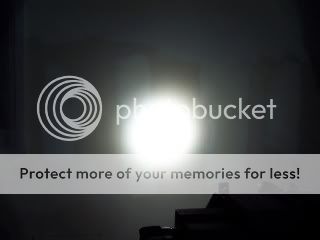
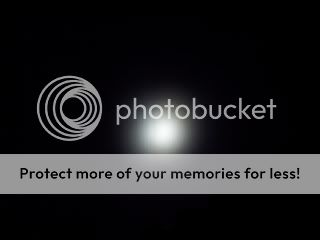


Comments: The beam is bright at the center and fades towards the edge before the transition to spill. Assigning a specific beam angle is difficult due to this variance across the hot spot.
------------------
LumensFactory ES-6 D26
(on 2x Panasonic CR123s, only minimal testing use on cells)
peak lux @~1M: ~5700
central beam angle: ~11°
spill lux: 3
spill beam angle: ~75°
Relative Overall Output: (Coming Soon!)

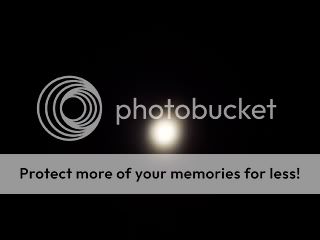


Comments: Tighter beam than a P60, less overall output, but this may prove to be more useful in many applications with longer runtime than the P60.
------------------
LumensFactory SR-6 D26
(on 2x Panasonic CR123s, only minimal testing use on cells)
peak lux @~1M: ~6100
central beam angle: ~13°
spill lux: 5
spill beam angle: ~75°
Relative Overall Output: (Coming Soon!)

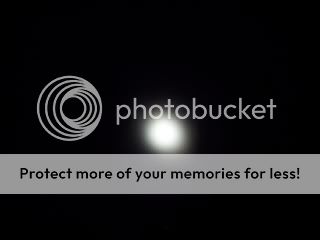


Comments: Tighter beam than a P60 with less intensity in the spill and more focus on the central beam. Great way to get a change of pace without a change in power consumption.
------------------
LumensFactory HO-6 D26
(on 2x Panasonic CR123s, only minimal testing use on cells)
peak lux @~1M: ~5800
central beam angle: ~15°
spill lux: 6
spill beam angle: ~75°
Relative Overall Output: (Coming Soon!)

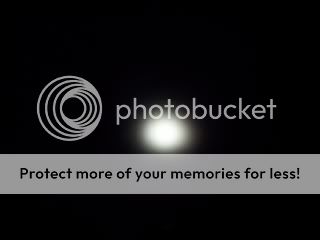


Comments: Beam profile here is still just slightly tighter than the P60, but with more of the overall light focused into that beam rather than in spill.
------------------
LumensFactory EO-6 D26
(on 2x Panasonic CR123s, only minimal testing use on cells)
peak lux @~1M: ~4100
central beam angle: ~19°
spill lux: 7
spill beam angle: ~75°
Relative Overall Output: (Coming Soon!)




Comments: Things get more floody with this lamp and starting to loose throw compared to the other LF offerings in the "6" series lineup. This lamp would probably be a good in-between for the P60 and P61 in many respects.
------------------
LumensFactory HO-4 D26
(On 1 protected AW 2200 18650 @4.10V +/-0.06V)
peak lux @~1M: ~3600
central beam angle: ~13°
spill lux: 3
spill beam angle: ~75°
Relative Overall Output: (Coming Soon!)




Comments: The tight pronounced beam produces similar peak to the P60, however, the overall output is actually lower than the P60. Not the most efficient lamp out there, but this is typical of low voltage high current bulb designs.
------------------
The popular 11836 D26 R2 drop-in ("super bright" ~1A drive)
(Powered by 2x3.7V RCR123s)
*This is the "old" version. The one that had a *good* regulator. The new 11836 from what has been mentioned in this thread is not worth bothering with.
(On 2x3.7V li-ion cells)
peak lux @~1M: ~6600
central beam angle: ~9°
spill lux: ~80
spill beam angle: ~60°
Relative Overall Output: (Coming Soon!)
(On 1x3.7V 18650)
peak lux @~1M: ~4700 (LiCo cell at ~4.10V resting)
central beam angle: ~9°
spill lux: ~57
spill beam angle: ~60°
Relative Overall Output: (Coming Soon!)

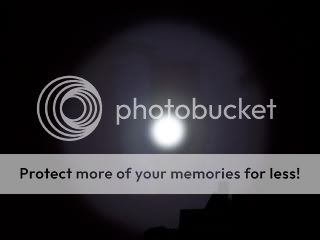


Comments: throwing this in for the sake of comparison so folks can see how a few LEDs compare to the world of tactical incans. I have to say though, that dollar for dollar, the 11836 continues to be, IMO, one of those true gems in the rough. I own several, no failures, great performance on a wide array of power sources (even 1 li-ion cell works plenty well for general use here). Can't beat the el-cheapo-ultra price tag here. I was especially surprised to find that my original guesstimates of output on a single li-ion cell were low, it's producing an estimated 140 torch lumen on a near-full-charged 18650. Slight cree ring is noticeable on white walls, in normal use it is not a significant issue, transition from spot to spill is softened properly.
------------------
LumensFactory D26 3.7-13V ~1A R2 1-mode module.
(Powered by 2x3.7V RCR123s)
(On 2x3.7V li-ion cells)
peak lux @~1M: ~8500
central beam angle: ~7°
spill lux: ~80
spill beam angle: ~60°
Relative Overall Output: (Coming Soon!)
(On 1x3.7V 18650)
peak lux @~1M: ~6100 (LiCo cell at ~4.10V resting)
central beam angle: ~7°
spill lux: ~57
spill beam angle: ~60°
Relative Overall Output: (Coming Soon!)




Comments: throwing this in for the sake of comparison so folks can see how a few LEDs compare to the world of tactical incans. Similar to 11836 but with a tighter beam and warmer color temp. I'd call it a "hand picked 11836 " Slight brownish cree ring but otherwise a good presentation.
" Slight brownish cree ring but otherwise a good presentation.
------------------
LumensFactory D36 smooth 3.7V-13V ~0.9A
(Powered by 2x3.7V RCR123s)
peak lux @~1M: ~13,500
central beam angle: ~4°
spill beam angle: ~75°
Relative Overall Output: (Coming Soon!)




Comments: throwing this in for the sake of comparison so folks can see how a few LEDs compare to the world of tactical incans. This sort of a strangely designed LED module. Doesn't quite compete with the super-throwers out there as the drive level and the reflector design aren't quite optimized. (the D36 line of LED modules use the same reflector "shape" as the incan series from what I can tell, which looses too much light to the spill beam to compete in that LED class)... It's still a fun module to play with non-the-less... No 30,000+ lux figures to boast here as found in most "dedicated" thrower LEDs, oh well.... Transition from spot to spill is harsh, spill contains noticeable cree rings and anomalies normally associated with smooth reflectors and cree XRE diodes.
------------------
G&P G90 D26
(Powered by 2x AW protected 18500s @4.14V +/-0.06V)
peak lux @~1M: ~5000
central beam angle: ~19°
spill lux: 16
spill beam angle: ~75°
Relative Overall Output: (Coming Soon!)




Comments: The beam shape is respectable and some-what adjustable. Adjusted for this test the beam is basically a fairly even round splotch with a smooth but semi-sudden transition to spill. With more adjustment, it can be made tighter or wider, so it just depends what you want out of it. Other 9V lamps in this power class seem to out perform it in overall output.
------------------
PathFinder P90 D26
(Powered by 2x AW protected 18500s @4.14V +/-0.06V)
peak lux @~1M: ~5600
central beam angle: ~15°
spill lux: 18
spill beam angle: ~75°
Relative Overall Output: (Coming Soon!)




Comments: I suspect that the bulb used in this off-brand lamp may have been similar to some of the older wolf-eyes and pila lamps that were more flood oriented. Can be adjusted slightly, most beams are *slightly* football shaped. (this one has a LONG filament). Definitely out-performs the "G90" above in overall output.
------------------
LumensFactory ES-9 D26
(Powered by 2x AW protected 18500s @4.14V +/-0.06V)
peak lux @~1M: ~4500
central beam angle: ~22°
spill lux: 7
spill beam angle: ~75°
Relative Overall Output: (Coming Soon!)




Comments: In my sample, things are pretty floody here. I'm not sure if this is normal for this lamp, or if I have an oddball variation that isn't focused as well as could be. I may "break" the thread-lock loose and try to re-adjust this and see what happens as my sample does not throw the way I would expect such a lamp to... Nice lower power consumption and useful output for general tasks would make this useful for applications where screaming output just isn't necessary but one desires the soft warmth of incandescent .
.
------------------
LumensFactory SR-9 D26
(Powered by 2x AW protected 18500s @4.14V +/-0.06V)
peak lux @~1M: ~9300
central beam angle: ~16°
spill lux: 15
spill beam angle: ~75°
Relative Overall Output: (Coming Soon!)
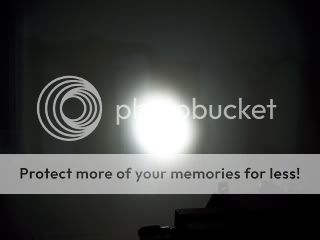



Comments: I was really surprised at the throwing performance here. This lamp definitely marks the "sweet spot" for throw in the D26 incan platform. God overall output for the power consumption and a nice round beam. The central beam is most intense at center with a smooth fading transition to spill.
------------------
LumensFactory HO-9 D26
(Powered by 2x AW protected 18500s @4.14V +/-0.06V)
peak lux @~1M: ~8200
central beam angle: ~17°
spill lux: ~16
spill beam angle: ~75°
Relative Overall Output: (Coming Soon!)


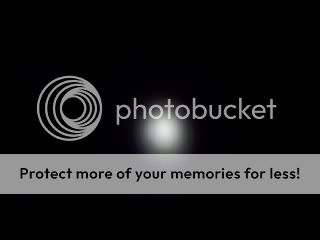

Comments: I like this lamp more than I like the EO-9 as it seems there is very little gain with the EO-9 for the increased power consumption. Beam profile here is very round and smooth with plenty of "reach" for the small reflector size. The center of the beam is slightly more intense than the majority of the splotch. Won't out-throw the SR-9, but the beam profile is similar, just wider with a few more lumens scattered around.
------------------
LumensFactory EO-9 D26
(Powered by 2x AW protected 18500s @4.14V +/-0.06V)
peak lux @~1M: ~7500
central beam angle: ~19°
spill lux: ~16
spill beam angle: ~75°
Relative Overall Output: (Coming Soon!)

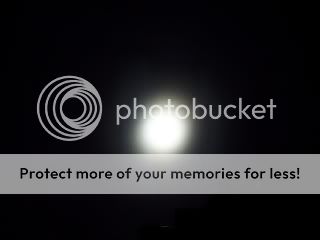

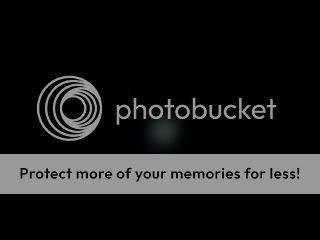
Comments: In my sample, the EO-9 produces a wider beam profile than the HO-9 (slightly oval, compared to the usual round beams I see with most LF products), the peak lux actually measured to be lower than the HO-9. Again, I've always found that the HO-9 seemed better in use than the EO-9. When you consider the increased beam size the EO-9 is making more overall lumens than the HO-9, but the total output difference is very small and impossible to register with the human eye. Mostly you just see a different beam shape here.
------------------
LumensFactory IMR-9 D26
(Powered by 2x AW protected 18500s @4.14V +/-0.06V)
peak lux @~1M: ~10500
central beam angle: ~20°
spill lux: ~30
spill beam angle: ~75°
Relative Overall Output: (Coming Soon!)




Comments: Beam profile is both wider and noticeably brighter than the EO-9 and HO-9. Beam is getting pretty floody at this point but there are plenty of lumens to go around. Beam shape is almost perfectly round with the highest intensity at center, and a gradual decline in intensity towards the edges of the central beam with a smooth but fairly sudden transition to spill. Bulb in this assembly is not frosted like in most D26 lamps, so there are some very minor ringy artifact like things going on in the spill that are only detectable on a while wall investigation.
*CPF member MrGman has tested this lamp vs an EO-9 and found them both to perform at ~270 true torch lumen. My testing produces much different results; my IMR-9 is able to produce higher lux figures while at the same time pumping out a wider beam profile. I'd estimate that my IMR-9 is *at least* ~1.5X the brightness of my EO-9 based on some pretty straight forward math and lux measurements.
------------------
SureFire P91 D26
(Powered by 2x AW protected 18500s @4.14V +/-0.06V)
peak lux @~1M: ~8700
central beam angle: ~27°
spill lux: ~34
spill beam angle: ~82°
Relative Overall Output: (Coming Soon!)




Comments: The peak lux here is slightly lower than the IMR-9, but if you do a little math, and calculated for the larger beam size, it's pretty obvious that this lamp is making some pretty significant lumens. The recent testing done by MrGman showing well over 400 torch lumens agrees with lamps "around" this one in my testing.... This lamp will not "reach out" any better than an IMR-9 in my experience, but it will dump a whole lot more lumens all over the place if you feed it the proper over-drive. The P91 has been dubbed by many the "wall-of-light" and it doesn't disappoint in this regard. Beam shape is oval. This is P7/MCE performance that can light fires if you want to...
*Note: This bulb is over-driven heavily on pairs of large li-ion cells and will have reduced bulb life.
--------------------
LumensFactory HO-M3
(Powered by 2x AW protected 18500s @4.14V +/-0.06V)
peak lux @~1M: ~18000
central beam angle: ~15°
spill lux: ~20
spill beam angle: ~60°
Relative Overall Output: (Coming Soon!)




Comments: An amazing thrower with a side of football shaped beam (good or bad depending on your tastes). If you were thinking about a D36 platform, like the SR-9L but want the shock isolation of the Z46 (M3) head, this is a great alternative in a similar "bulk" class.
--------------------
LumensFactory EO-M3
(Powered by 2x AW protected 18500s @4.14V +/-0.06V)
peak lux @~1M: ~15000
central beam angle: ~17°
spill lux: 26
spill beam angle: ~60°
Relative Overall Output: (Coming Soon!)

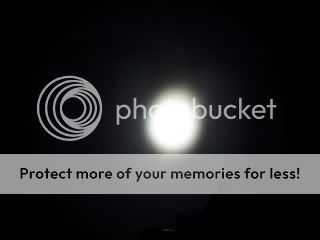
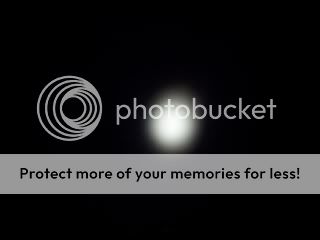

Comments: A slight move up in overall output, with a slight loss in peak lux compared to the HO-M3, this lamp also has a football shaped beam. If you want a beam profile that is slightly more "filled out" with a few more lumens kicking around, this may be the ticket.
--------------------
LumensFactory IMR-M3
(Powered by 2x AW protected 18500s @4.14V +/-0.06V)
peak lux @~1M: ~15500
central beam angle: ~19°
spill lux: 39
spill beam angle: ~60°
Relative Overall Output: (Coming Soon!)


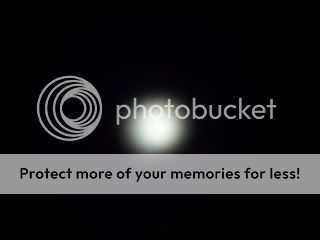

Comments: The bulb being used here is either the same as, or very similar to the bulb of the IMR-9 assembly, but the bulb really does a neat trick in the Z46 reflector (M3 head). The beam angle is still very wide, only slightly narrower than the IMR-9, but it seems like that Z46's reflector design and this bulb were made to put lumens in that central beam. The "splotch" of light that this thing produces is like this perfectly circular defined area of consistent illumination. Transition from spot to spill zones is pretty sudden but with soft enough edges. It's very interesting in use, because the beam profile is obviously very wide, but it is reaching out and illuminating everything at range with incredible authority. This lamp is a pleasure to use. guaranteed smile production here.
--------------------
LumensFactory SR-9L D36
(Powered by 2x AW protected 18500s @4.14V +/-0.06V)
peak lux @~1M: ~18500
central beam angle: ~12°
spill lux: 20
spill beam angle: ~75°
Relative Overall Output: (Coming Soon!)




Comments: Throws like a full size turbo-head yet falls in the mini-turbo classification for size. Quickly becoming one of my favorite lamps with it's relatively low power consumption and useful illumination at range outdoors that competes with much more power hungry and space consuming configurations. This is a real gem of a lamp that runs nice and white even on smaller batteries. Hard to justify moving up to more power hungary lamps when you have actually used one of these. Beam shape is very round and tight, with progressively more intense illumination towards the center of the beam profile, and a soft transition to spill. Non frosted lamp here helps maximize that throw but does introduce some minor artifacts in the spill.
-----------------------
LumensFactory EO-9L D36
(Powered by 2x AW protected 18500s @4.14V +/-0.06V)
peak lux @~1M: ~20000
central beam angle: ~15°
spill lux: ~30
spill beam angle: ~75°
Relative Overall Output: (Coming Soon!)


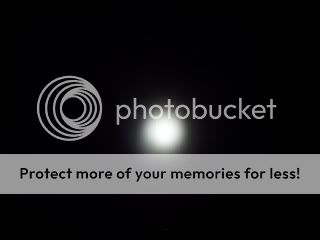

Comments: More hotspot size, more throw, more overall output, a noticeable and worthwhile step up from the SR-9L if you must have serious illumination.
-----------------------
LumensFactory IMR-9L D36
(Powered by 2x Emoli 18650s @4.08V +/-0.06V)
peak lux @~1M: ~18000
central beam angle: ~15-20°
spill lux: ~38
spill beam angle: ~75°
Relative Overall Output: (Coming Soon!)




Comments: The bulb is a IMR-M3T transplanted into the D36 reflector. The result is a less than perfect culmination of performance. The overall output seems to be less than would be expected for the power consumption, and the beam transitions in layers to spill. I think a lot of lumens are being tossed about without the necessary refinement. It's difficult to define a beam angle here with the various transitions taking place within the beam. Most of the other D36 lamps I have test have all been very well refined by comparison. I think a set of brand spanking fresh IMR18650s are really required to make this lamp worth it's huge power consumption.
------------------------
LumensFactory HO-13 D36
(Powered by 3x AW protected 18500s @4.14V +/-0.06V)
peak lux @~1M: ~18000
central beam angle: ~16°
spill lux: ~31
spill beam angle: ~75°
Relative Overall Output: (Coming Soon!)




Comments: In much the same way that the SR-9L makes higher powered lamps seem unnecessary, this lamp again comes along and proves to be a gem of a performer, reminding you that you don't really need the bigger number to get the job done. Beam characteristic is similar to the SR-9L just wider, similar central lux values just more to go around. Keep in mind that this lamp actually draws slightly less current than the SR-9L, so if you don't mind the larger configuration of 3 cells vs 2 cells, a build based on this lamp can actually have both better runtime and better output than the SR-9L at the expense of that extra cell length.
------------------------
LumensFactory EO-13 D36
(Powered by 3x AW protected 18500s @4.14V +/-0.06V)
peak lux @~1M: ~21000
central beam angle: ~19°
spill lux: ~50
spill beam angle: ~75°
Relative Overall Output: (Coming Soon!)
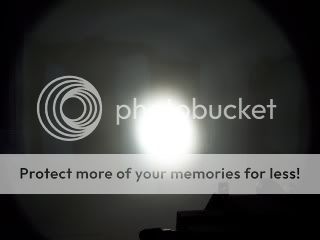



Comments: Larger beam profile and more intensity all around, the EO-13 will help you itch that scratch for dumping a lot of lumens down-wind in a nice balance between beam intensity and size. You do see the difference using this lamp, compared to the lesser D36 lamps. Undoubtedly this lamp probably serves its purpose as a show-off more than anything else (it should dazzle just about any CPFer, and totally jaw-drop the average public), but a good showoff always has his day. If I had to choose just one lamp to "bust out" in a really "serious" situation, like..; "is that a bear over there....?" this would be it. You can holster something in this configuration without too much discomfort and know that nothing can hide from you.
-------------------------
LumensFactory IMR-13 D36
(Powered by 3x AW protected 18500s @4.14V +/-0.06V)
peak lux @~1M: ~20000
central beam angle: ~20-25°
spill lux: ~62
spill beam angle: ~75°
Relative Overall Output: (Coming Soon!)




Comments: A big fat IMR-M6 bulb slapped in a D36 reflector. On this transplant LF got lucky and made a total flood monster that looks great. The only way to sum this up would be: A round beam profile P91 with double the lumens! ENJOY!
-------------------------
LumensFactory HO-M3T
(Powered by 2x AW protected 18500s @4.14V +/-0.06V)
peak lux @~1M: ~30500
central beam angle: ~9°
spill lux: ~28
spill beam angle: ~75°
Relative Overall Output: (Coming Soon!)




Comments: Need Throw? Satisfaction A tight round spot to stave off of that need for a laser collection.
A tight round spot to stave off of that need for a laser collection.
---------------------
LumensFactory EO-M3T
(Powered by 2x AW protected 18500s @4.14V +/-0.06V)
peak lux @~1M: ~20000
central beam angle: ~12°
spill lux: ~33
spill beam angle: ~75°
Relative Overall Output: (Coming Soon!)




Comments: More overall output than the HO-M3T, but not as tightly focused. Very useful bulb, probably the best side-step from an MN16 you could make to put bulb life back on the table in li-ion driven applications. Handily beats the MN20 in all areas with similar power consumption.
---------------------
LumensFactory IMR-M3T
(Powered by 2x Emoli 18650s @4.08V +/-0.06V)
peak lux @~1M: ~21,000
central beam angle: ~12-14°
spill lux: ~30
spill beam angle: ~75°
Relative Overall Output: (Coming Soon!)




Comments: A step up from the EO-M3T, the central spot is slightly wider and slightly brighter. This is basically the 64250/1111 alternative for those who want to have freedom to run IMR cells or large LiCo cells without fear of premature bulb failure.
---------------------
LumensFactory HO-M6R
(Powered by 3x AW protected 18500s @4.14V +/-0.06V)
peak lux @~1M: ~39000
central beam angle: ~10°
spill lux: ~50
spill beam angle: ~75°
Relative Overall Output: (Coming Soon!)




Comments: This is the most powerful thrower of every lamp I have tested so far, and it's also pretty conservative in the power consumption department. A large number of CPF members have converted to using this lamp in many different configurations and absolutely love it. This may be one of the most efficient lamps that LF makes. It makes all the lumens you could possibly need and just slams them into a rod of light that has to be seen to understand.
---------------------
LumensFactory IMR-M6
(Powered by 3x AW protected 18500s @4.14V +/-0.06V)
peak lux @~1M: ~29000
central beam angle: ~9-15°
spill lux: 53
spill beam angle: ~75°
Relative Overall Output: (Coming Soon!)


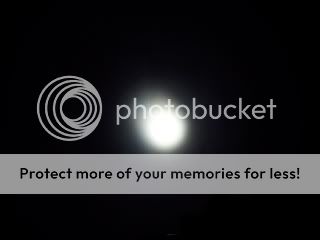

Comments: The "beam angle" data point here is a little tough to define. It's very intense at the center with a off-center oval layer surrounding that central beam. Not as well executed as one might desire but overall output is enormous, Appears to be just a hair brighter than the MN21.
---------------------
SureFire MN20
(Powered by 2x AW protected 18500s @4.14V +/-0.06V)
peak lux @~1M: ~17000
central beam angle: ~11°
spill lux: 30
spill beam angle: ~75°
Relative Overall Output: (Coming Soon!)




Comments: The beam angle is actually really hard to define here, it's the most exaggerated oblong oval shape beam shape of any lamp assembly I have seen. The peak lux in the center is not representative of the entire beam, there is a tight central spot within the beam that produces the high lux numbers.If you don't mind the oblong shape of the beam, this is probably one of the more practical bulb options for running on a pair of li-ion cells if you want reliable bulb life on the table.
----------------------
SureFire MN21
(Powered by 2x Emoli 18650s @4.08V +/-0.06V)
peak lux @~1M: ~25000
central beam angle: ~13°
spill lux: 45
spill beam angle: ~75°
Relative Overall Output: (Coming Soon!)




Comments: Slightly-Over-driven, this bulb is doing around 1000 bulb lumen no doubt. This is one of the few SF lamps that actually produces a very round beam shape from what I have read. One of my favorites when I don't give a crap about runtime. It's like having a column of powerful illumination to work with.
*Note: The high current demand here and tendency for insta-flash on high-current-capable cells makes this a tricky bulb to use in li-ion driven applications.
----------------------
64250/1111 in SF millennium turbo-head (FM bi-pin adapter)
(Powered by 2x AW protected 2200mAH 18650s @4.14V +/-0.06V)
peak lux @1M: 29000
central beam angle: 10-13°
spill lux: 40
spill beam angle: ~75°
Relative Overall Output: (Coming Soon!)




Comments: Overall output is very slightly better than the IMR-M3T, and really close to the MN21. the beam shape can actually be modified with minor adjustments to the position of the bulb in the tower, higher peak lux is probably possible with tweaking.
*Note: This bulb has a short life when used on li-ion cells. A pair of larger "IMR" style cells will often blow this bulb.
----------------------
This thread is a work in progress like many of my other threads. I intend to add more bulbs when I can afford to pick them up....
On the "coming when I can afford it list:" MN10, MN11, MN15, MN16, P90, 1185, Possibly some others...
-Eric

Some information about the shootout:
I have included various information about each bulb, here's how it al breaks down...
peak lux @1M: This is the highest lux value I can find within the central beam. This is useful for determining what applications the lamp may be suitable for. Most importantly, what range the lamp will effectively illuminate targets at.
central beam angle: A rough idea of the angle of the beam, produced by taking measurements on the wall and using trig to solve for the angle. This is not an exact science as everyone would have a different definition of where the beam begins and ends (all tested here have some "soft" transition due to the textured reflectors involved). Some are listed as a "range" where I couldn't decide. This is useful for picking applications for particular lamps. Narrower beams reveal less about what's going on around you, but will reach out and touch things, wider beams are usually better at close range, and medium range if they have enough oomf behind them.
spill lux: This is a lux measurement taken well off to the side of any of the central beams, at the same angle-off-center and position in each lamps test. This data helps one determine about how much intensity there is in the spill beam. As it would turn out, when this statistic is compared from lamp to lamp with the same spill beam angle (see below), and same light source (incan or LED), and similar reflector coatings, it is somewhat representative of relative total output form the lamp.
spill beam angle: This just has to do with the shape of the reflector and the bulb position within it. The wide circuit of spill light emitted by most flashlights comes in different variations, and some people my prefer wider or narrower spill beams depending on application. Most incan tactical lamps are about the same, with 2 dramatic exceptions: the E series and M3 (Z46) series of lamps.
Relative Overall Output: (Coming Soon!) I'm brainstorming some ways to make a light-box that performs the all important function of eliminating the effect of beam shape or intensity on results. I will know I have succeeded when 2 bulbs in different reflectors generate the same results in the box.
Below that you will find a series of beam shots on a "white wall." The purpose of these shots is mostly just to help illustrate the shape of the beam. The shots are taken at 1/[email protected], 1/[email protected], 1/[email protected], 1/[email protected] respectively. Looking at the shots and taking in information from different exposure setting can be revealing about how intense the beam is, or how soft the transition is, or if it's oval or round, etc etc etc.
Enjoy!
-----------------
SureFire E2E w/MN03
(on 2x SureFire CR123s, relatively fresh cells)
peak lux @~1M: ~1900
central beam angle: ~13°
Spill Lux: ~10
spill beam angle: ~100°
Relative Overall Output: (Coming Soon!)




Comments: Surprisingly tight beam considering small reflector, tighter than a P60, which is strange. Spill beam on the E2E with the shallow reflector is extremely wide. Wider than any flashlight I have used to date. Very useful and a nice change of pace from the usual beam patterns of flashlights. The very wide spill carries over to after-market lamps as well. While the on-paper numbers are lower, I prefer this in actual use over a P60 any day, indoors or outside.
-----------------
LumensFactory HO-E2R
(on 2x AWIMR16340s @4.10V+/-0.07V)
peak lux @~1M: ~900
central beam angle: ~17°
Spill lux: ~15
spill beam angle: ~100°
Relative Overall Output: (Coming Soon!)




*Note: Electrical contact on some LF "E" series bulbs will require a thin shim installed over the front of the bulb housing.
Floody central beam produces less than thrilling throw performance, but the beam is more thoroughly filled out, compared with the other E2E lamps that have a tight center that fades to the edge. So, the lux figures here are a bit misleading.
-----------------
LumensFactory EO-E2R
(on 2x AWIMR16340s @4.10V+/-0.07V)
peak lux @~1M: ~2400
central beam angle: ~15°
spill lux: ~16
spill beam angle: ~100°
Relative Overall Output: (Coming Soon!)




*Note: Electrical contact on some LF "E" series bulbs will require a thin shim installed over the front of the bulb housing.
Beam pattern and style here is very similar to the stock MN03, just a slightly brighter overall performance here. This would be the lamp to go to if you like the MN03 but want to move to a rechargeable configuration.
-----------------
LumensFactory IMR-E2
(on 2xAWIMR16340 cells @4.10V+/-0.07V)
peak lux @~1M: ~4100
central beam angle: ~15-20°
spill lux: ~23
spill beam angle: ~100°
Relative Overall Output: (Coming Soon!)




Comments: Peak lux here isn't exactly great compared with larger hosted options, but that is to be expected when cramming such a large filament into such a small reflector. Of course, we are working with the shallow reflector of the E2E here that produces the massive spill angle with less of the total lumens being focused into that central beam. The central beam profile is also pretty floody but does reach out surprisingly well. This is a fun lamp to own and use overall. A dark section of newspaper placed right in front of this configuration will start smoking in 3-5 seconds. Spill beam has a few ringy artifacts typical of non-frosted lamps, not noticable in most normal use but will show up if you are looking for it. Flashlight body gets pretty warm pretty fast as well...
*Note: Electrical contact on some LF "E" series bulbs will require a thin shim installed over the front of the bulb housing.
------------------
SureFire P60 D26
(on 2x Panasonic CR123s, less than 1min runtime on cells)
peak lux @~1M: ~3700
central beam angle: ~15-20°
spill lux: 7
spill beam angle: ~82°
Relative Overall Output: (Coming Soon!)




Comments: The beam is bright at the center and fades towards the edge before the transition to spill. Assigning a specific beam angle is difficult due to this variance across the hot spot.
------------------
LumensFactory ES-6 D26
(on 2x Panasonic CR123s, only minimal testing use on cells)
peak lux @~1M: ~5700
central beam angle: ~11°
spill lux: 3
spill beam angle: ~75°
Relative Overall Output: (Coming Soon!)




Comments: Tighter beam than a P60, less overall output, but this may prove to be more useful in many applications with longer runtime than the P60.
------------------
LumensFactory SR-6 D26
(on 2x Panasonic CR123s, only minimal testing use on cells)
peak lux @~1M: ~6100
central beam angle: ~13°
spill lux: 5
spill beam angle: ~75°
Relative Overall Output: (Coming Soon!)




Comments: Tighter beam than a P60 with less intensity in the spill and more focus on the central beam. Great way to get a change of pace without a change in power consumption.
------------------
LumensFactory HO-6 D26
(on 2x Panasonic CR123s, only minimal testing use on cells)
peak lux @~1M: ~5800
central beam angle: ~15°
spill lux: 6
spill beam angle: ~75°
Relative Overall Output: (Coming Soon!)




Comments: Beam profile here is still just slightly tighter than the P60, but with more of the overall light focused into that beam rather than in spill.
------------------
LumensFactory EO-6 D26
(on 2x Panasonic CR123s, only minimal testing use on cells)
peak lux @~1M: ~4100
central beam angle: ~19°
spill lux: 7
spill beam angle: ~75°
Relative Overall Output: (Coming Soon!)




Comments: Things get more floody with this lamp and starting to loose throw compared to the other LF offerings in the "6" series lineup. This lamp would probably be a good in-between for the P60 and P61 in many respects.
------------------
LumensFactory HO-4 D26
(On 1 protected AW 2200 18650 @4.10V +/-0.06V)
peak lux @~1M: ~3600
central beam angle: ~13°
spill lux: 3
spill beam angle: ~75°
Relative Overall Output: (Coming Soon!)




Comments: The tight pronounced beam produces similar peak to the P60, however, the overall output is actually lower than the P60. Not the most efficient lamp out there, but this is typical of low voltage high current bulb designs.
------------------
The popular 11836 D26 R2 drop-in ("super bright" ~1A drive)
(Powered by 2x3.7V RCR123s)
*This is the "old" version. The one that had a *good* regulator. The new 11836 from what has been mentioned in this thread is not worth bothering with.
(On 2x3.7V li-ion cells)
peak lux @~1M: ~6600
central beam angle: ~9°
spill lux: ~80
spill beam angle: ~60°
Relative Overall Output: (Coming Soon!)
(On 1x3.7V 18650)
peak lux @~1M: ~4700 (LiCo cell at ~4.10V resting)
central beam angle: ~9°
spill lux: ~57
spill beam angle: ~60°
Relative Overall Output: (Coming Soon!)




Comments: throwing this in for the sake of comparison so folks can see how a few LEDs compare to the world of tactical incans. I have to say though, that dollar for dollar, the 11836 continues to be, IMO, one of those true gems in the rough. I own several, no failures, great performance on a wide array of power sources (even 1 li-ion cell works plenty well for general use here). Can't beat the el-cheapo-ultra price tag here. I was especially surprised to find that my original guesstimates of output on a single li-ion cell were low, it's producing an estimated 140 torch lumen on a near-full-charged 18650. Slight cree ring is noticeable on white walls, in normal use it is not a significant issue, transition from spot to spill is softened properly.
------------------
LumensFactory D26 3.7-13V ~1A R2 1-mode module.
(Powered by 2x3.7V RCR123s)
(On 2x3.7V li-ion cells)
peak lux @~1M: ~8500
central beam angle: ~7°
spill lux: ~80
spill beam angle: ~60°
Relative Overall Output: (Coming Soon!)
(On 1x3.7V 18650)
peak lux @~1M: ~6100 (LiCo cell at ~4.10V resting)
central beam angle: ~7°
spill lux: ~57
spill beam angle: ~60°
Relative Overall Output: (Coming Soon!)




Comments: throwing this in for the sake of comparison so folks can see how a few LEDs compare to the world of tactical incans. Similar to 11836 but with a tighter beam and warmer color temp. I'd call it a "hand picked 11836
------------------
LumensFactory D36 smooth 3.7V-13V ~0.9A
(Powered by 2x3.7V RCR123s)
peak lux @~1M: ~13,500
central beam angle: ~4°
spill beam angle: ~75°
Relative Overall Output: (Coming Soon!)




Comments: throwing this in for the sake of comparison so folks can see how a few LEDs compare to the world of tactical incans. This sort of a strangely designed LED module. Doesn't quite compete with the super-throwers out there as the drive level and the reflector design aren't quite optimized. (the D36 line of LED modules use the same reflector "shape" as the incan series from what I can tell, which looses too much light to the spill beam to compete in that LED class)... It's still a fun module to play with non-the-less... No 30,000+ lux figures to boast here as found in most "dedicated" thrower LEDs, oh well.... Transition from spot to spill is harsh, spill contains noticeable cree rings and anomalies normally associated with smooth reflectors and cree XRE diodes.
------------------
G&P G90 D26
(Powered by 2x AW protected 18500s @4.14V +/-0.06V)
peak lux @~1M: ~5000
central beam angle: ~19°
spill lux: 16
spill beam angle: ~75°
Relative Overall Output: (Coming Soon!)




Comments: The beam shape is respectable and some-what adjustable. Adjusted for this test the beam is basically a fairly even round splotch with a smooth but semi-sudden transition to spill. With more adjustment, it can be made tighter or wider, so it just depends what you want out of it. Other 9V lamps in this power class seem to out perform it in overall output.
------------------
PathFinder P90 D26
(Powered by 2x AW protected 18500s @4.14V +/-0.06V)
peak lux @~1M: ~5600
central beam angle: ~15°
spill lux: 18
spill beam angle: ~75°
Relative Overall Output: (Coming Soon!)




Comments: I suspect that the bulb used in this off-brand lamp may have been similar to some of the older wolf-eyes and pila lamps that were more flood oriented. Can be adjusted slightly, most beams are *slightly* football shaped. (this one has a LONG filament). Definitely out-performs the "G90" above in overall output.
------------------
LumensFactory ES-9 D26
(Powered by 2x AW protected 18500s @4.14V +/-0.06V)
peak lux @~1M: ~4500
central beam angle: ~22°
spill lux: 7
spill beam angle: ~75°
Relative Overall Output: (Coming Soon!)




Comments: In my sample, things are pretty floody here. I'm not sure if this is normal for this lamp, or if I have an oddball variation that isn't focused as well as could be. I may "break" the thread-lock loose and try to re-adjust this and see what happens as my sample does not throw the way I would expect such a lamp to... Nice lower power consumption and useful output for general tasks would make this useful for applications where screaming output just isn't necessary but one desires the soft warmth of incandescent
------------------
LumensFactory SR-9 D26
(Powered by 2x AW protected 18500s @4.14V +/-0.06V)
peak lux @~1M: ~9300
central beam angle: ~16°
spill lux: 15
spill beam angle: ~75°
Relative Overall Output: (Coming Soon!)




Comments: I was really surprised at the throwing performance here. This lamp definitely marks the "sweet spot" for throw in the D26 incan platform. God overall output for the power consumption and a nice round beam. The central beam is most intense at center with a smooth fading transition to spill.
------------------
LumensFactory HO-9 D26
(Powered by 2x AW protected 18500s @4.14V +/-0.06V)
peak lux @~1M: ~8200
central beam angle: ~17°
spill lux: ~16
spill beam angle: ~75°
Relative Overall Output: (Coming Soon!)




Comments: I like this lamp more than I like the EO-9 as it seems there is very little gain with the EO-9 for the increased power consumption. Beam profile here is very round and smooth with plenty of "reach" for the small reflector size. The center of the beam is slightly more intense than the majority of the splotch. Won't out-throw the SR-9, but the beam profile is similar, just wider with a few more lumens scattered around.
------------------
LumensFactory EO-9 D26
(Powered by 2x AW protected 18500s @4.14V +/-0.06V)
peak lux @~1M: ~7500
central beam angle: ~19°
spill lux: ~16
spill beam angle: ~75°
Relative Overall Output: (Coming Soon!)




Comments: In my sample, the EO-9 produces a wider beam profile than the HO-9 (slightly oval, compared to the usual round beams I see with most LF products), the peak lux actually measured to be lower than the HO-9. Again, I've always found that the HO-9 seemed better in use than the EO-9. When you consider the increased beam size the EO-9 is making more overall lumens than the HO-9, but the total output difference is very small and impossible to register with the human eye. Mostly you just see a different beam shape here.
------------------
LumensFactory IMR-9 D26
(Powered by 2x AW protected 18500s @4.14V +/-0.06V)
peak lux @~1M: ~10500
central beam angle: ~20°
spill lux: ~30
spill beam angle: ~75°
Relative Overall Output: (Coming Soon!)




Comments: Beam profile is both wider and noticeably brighter than the EO-9 and HO-9. Beam is getting pretty floody at this point but there are plenty of lumens to go around. Beam shape is almost perfectly round with the highest intensity at center, and a gradual decline in intensity towards the edges of the central beam with a smooth but fairly sudden transition to spill. Bulb in this assembly is not frosted like in most D26 lamps, so there are some very minor ringy artifact like things going on in the spill that are only detectable on a while wall investigation.
*CPF member MrGman has tested this lamp vs an EO-9 and found them both to perform at ~270 true torch lumen. My testing produces much different results; my IMR-9 is able to produce higher lux figures while at the same time pumping out a wider beam profile. I'd estimate that my IMR-9 is *at least* ~1.5X the brightness of my EO-9 based on some pretty straight forward math and lux measurements.
------------------
SureFire P91 D26
(Powered by 2x AW protected 18500s @4.14V +/-0.06V)
peak lux @~1M: ~8700
central beam angle: ~27°
spill lux: ~34
spill beam angle: ~82°
Relative Overall Output: (Coming Soon!)




Comments: The peak lux here is slightly lower than the IMR-9, but if you do a little math, and calculated for the larger beam size, it's pretty obvious that this lamp is making some pretty significant lumens. The recent testing done by MrGman showing well over 400 torch lumens agrees with lamps "around" this one in my testing.... This lamp will not "reach out" any better than an IMR-9 in my experience, but it will dump a whole lot more lumens all over the place if you feed it the proper over-drive. The P91 has been dubbed by many the "wall-of-light" and it doesn't disappoint in this regard. Beam shape is oval. This is P7/MCE performance that can light fires if you want to...
*Note: This bulb is over-driven heavily on pairs of large li-ion cells and will have reduced bulb life.
--------------------
LumensFactory HO-M3
(Powered by 2x AW protected 18500s @4.14V +/-0.06V)
peak lux @~1M: ~18000
central beam angle: ~15°
spill lux: ~20
spill beam angle: ~60°
Relative Overall Output: (Coming Soon!)




Comments: An amazing thrower with a side of football shaped beam (good or bad depending on your tastes). If you were thinking about a D36 platform, like the SR-9L but want the shock isolation of the Z46 (M3) head, this is a great alternative in a similar "bulk" class.
--------------------
LumensFactory EO-M3
(Powered by 2x AW protected 18500s @4.14V +/-0.06V)
peak lux @~1M: ~15000
central beam angle: ~17°
spill lux: 26
spill beam angle: ~60°
Relative Overall Output: (Coming Soon!)




Comments: A slight move up in overall output, with a slight loss in peak lux compared to the HO-M3, this lamp also has a football shaped beam. If you want a beam profile that is slightly more "filled out" with a few more lumens kicking around, this may be the ticket.
--------------------
LumensFactory IMR-M3
(Powered by 2x AW protected 18500s @4.14V +/-0.06V)
peak lux @~1M: ~15500
central beam angle: ~19°
spill lux: 39
spill beam angle: ~60°
Relative Overall Output: (Coming Soon!)




Comments: The bulb being used here is either the same as, or very similar to the bulb of the IMR-9 assembly, but the bulb really does a neat trick in the Z46 reflector (M3 head). The beam angle is still very wide, only slightly narrower than the IMR-9, but it seems like that Z46's reflector design and this bulb were made to put lumens in that central beam. The "splotch" of light that this thing produces is like this perfectly circular defined area of consistent illumination. Transition from spot to spill zones is pretty sudden but with soft enough edges. It's very interesting in use, because the beam profile is obviously very wide, but it is reaching out and illuminating everything at range with incredible authority. This lamp is a pleasure to use. guaranteed smile production here.
--------------------
LumensFactory SR-9L D36
(Powered by 2x AW protected 18500s @4.14V +/-0.06V)
peak lux @~1M: ~18500
central beam angle: ~12°
spill lux: 20
spill beam angle: ~75°
Relative Overall Output: (Coming Soon!)




Comments: Throws like a full size turbo-head yet falls in the mini-turbo classification for size. Quickly becoming one of my favorite lamps with it's relatively low power consumption and useful illumination at range outdoors that competes with much more power hungry and space consuming configurations. This is a real gem of a lamp that runs nice and white even on smaller batteries. Hard to justify moving up to more power hungary lamps when you have actually used one of these. Beam shape is very round and tight, with progressively more intense illumination towards the center of the beam profile, and a soft transition to spill. Non frosted lamp here helps maximize that throw but does introduce some minor artifacts in the spill.
-----------------------
LumensFactory EO-9L D36
(Powered by 2x AW protected 18500s @4.14V +/-0.06V)
peak lux @~1M: ~20000
central beam angle: ~15°
spill lux: ~30
spill beam angle: ~75°
Relative Overall Output: (Coming Soon!)




Comments: More hotspot size, more throw, more overall output, a noticeable and worthwhile step up from the SR-9L if you must have serious illumination.
-----------------------
LumensFactory IMR-9L D36
(Powered by 2x Emoli 18650s @4.08V +/-0.06V)
peak lux @~1M: ~18000
central beam angle: ~15-20°
spill lux: ~38
spill beam angle: ~75°
Relative Overall Output: (Coming Soon!)




Comments: The bulb is a IMR-M3T transplanted into the D36 reflector. The result is a less than perfect culmination of performance. The overall output seems to be less than would be expected for the power consumption, and the beam transitions in layers to spill. I think a lot of lumens are being tossed about without the necessary refinement. It's difficult to define a beam angle here with the various transitions taking place within the beam. Most of the other D36 lamps I have test have all been very well refined by comparison. I think a set of brand spanking fresh IMR18650s are really required to make this lamp worth it's huge power consumption.
------------------------
LumensFactory HO-13 D36
(Powered by 3x AW protected 18500s @4.14V +/-0.06V)
peak lux @~1M: ~18000
central beam angle: ~16°
spill lux: ~31
spill beam angle: ~75°
Relative Overall Output: (Coming Soon!)




Comments: In much the same way that the SR-9L makes higher powered lamps seem unnecessary, this lamp again comes along and proves to be a gem of a performer, reminding you that you don't really need the bigger number to get the job done. Beam characteristic is similar to the SR-9L just wider, similar central lux values just more to go around. Keep in mind that this lamp actually draws slightly less current than the SR-9L, so if you don't mind the larger configuration of 3 cells vs 2 cells, a build based on this lamp can actually have both better runtime and better output than the SR-9L at the expense of that extra cell length.
------------------------
LumensFactory EO-13 D36
(Powered by 3x AW protected 18500s @4.14V +/-0.06V)
peak lux @~1M: ~21000
central beam angle: ~19°
spill lux: ~50
spill beam angle: ~75°
Relative Overall Output: (Coming Soon!)




Comments: Larger beam profile and more intensity all around, the EO-13 will help you itch that scratch for dumping a lot of lumens down-wind in a nice balance between beam intensity and size. You do see the difference using this lamp, compared to the lesser D36 lamps. Undoubtedly this lamp probably serves its purpose as a show-off more than anything else (it should dazzle just about any CPFer, and totally jaw-drop the average public), but a good showoff always has his day. If I had to choose just one lamp to "bust out" in a really "serious" situation, like..; "is that a bear over there....?" this would be it. You can holster something in this configuration without too much discomfort and know that nothing can hide from you.
-------------------------
LumensFactory IMR-13 D36
(Powered by 3x AW protected 18500s @4.14V +/-0.06V)
peak lux @~1M: ~20000
central beam angle: ~20-25°
spill lux: ~62
spill beam angle: ~75°
Relative Overall Output: (Coming Soon!)




Comments: A big fat IMR-M6 bulb slapped in a D36 reflector. On this transplant LF got lucky and made a total flood monster that looks great. The only way to sum this up would be: A round beam profile P91 with double the lumens! ENJOY!
-------------------------
LumensFactory HO-M3T
(Powered by 2x AW protected 18500s @4.14V +/-0.06V)
peak lux @~1M: ~30500
central beam angle: ~9°
spill lux: ~28
spill beam angle: ~75°
Relative Overall Output: (Coming Soon!)




Comments: Need Throw? Satisfaction
---------------------
LumensFactory EO-M3T
(Powered by 2x AW protected 18500s @4.14V +/-0.06V)
peak lux @~1M: ~20000
central beam angle: ~12°
spill lux: ~33
spill beam angle: ~75°
Relative Overall Output: (Coming Soon!)




Comments: More overall output than the HO-M3T, but not as tightly focused. Very useful bulb, probably the best side-step from an MN16 you could make to put bulb life back on the table in li-ion driven applications. Handily beats the MN20 in all areas with similar power consumption.
---------------------
LumensFactory IMR-M3T
(Powered by 2x Emoli 18650s @4.08V +/-0.06V)
peak lux @~1M: ~21,000
central beam angle: ~12-14°
spill lux: ~30
spill beam angle: ~75°
Relative Overall Output: (Coming Soon!)




Comments: A step up from the EO-M3T, the central spot is slightly wider and slightly brighter. This is basically the 64250/1111 alternative for those who want to have freedom to run IMR cells or large LiCo cells without fear of premature bulb failure.
---------------------
LumensFactory HO-M6R
(Powered by 3x AW protected 18500s @4.14V +/-0.06V)
peak lux @~1M: ~39000
central beam angle: ~10°
spill lux: ~50
spill beam angle: ~75°
Relative Overall Output: (Coming Soon!)




Comments: This is the most powerful thrower of every lamp I have tested so far, and it's also pretty conservative in the power consumption department. A large number of CPF members have converted to using this lamp in many different configurations and absolutely love it. This may be one of the most efficient lamps that LF makes. It makes all the lumens you could possibly need and just slams them into a rod of light that has to be seen to understand.
---------------------
LumensFactory IMR-M6
(Powered by 3x AW protected 18500s @4.14V +/-0.06V)
peak lux @~1M: ~29000
central beam angle: ~9-15°
spill lux: 53
spill beam angle: ~75°
Relative Overall Output: (Coming Soon!)




Comments: The "beam angle" data point here is a little tough to define. It's very intense at the center with a off-center oval layer surrounding that central beam. Not as well executed as one might desire but overall output is enormous, Appears to be just a hair brighter than the MN21.
---------------------
SureFire MN20
(Powered by 2x AW protected 18500s @4.14V +/-0.06V)
peak lux @~1M: ~17000
central beam angle: ~11°
spill lux: 30
spill beam angle: ~75°
Relative Overall Output: (Coming Soon!)




Comments: The beam angle is actually really hard to define here, it's the most exaggerated oblong oval shape beam shape of any lamp assembly I have seen. The peak lux in the center is not representative of the entire beam, there is a tight central spot within the beam that produces the high lux numbers.If you don't mind the oblong shape of the beam, this is probably one of the more practical bulb options for running on a pair of li-ion cells if you want reliable bulb life on the table.
----------------------
SureFire MN21
(Powered by 2x Emoli 18650s @4.08V +/-0.06V)
peak lux @~1M: ~25000
central beam angle: ~13°
spill lux: 45
spill beam angle: ~75°
Relative Overall Output: (Coming Soon!)




Comments: Slightly-Over-driven, this bulb is doing around 1000 bulb lumen no doubt. This is one of the few SF lamps that actually produces a very round beam shape from what I have read. One of my favorites when I don't give a crap about runtime. It's like having a column of powerful illumination to work with.
*Note: The high current demand here and tendency for insta-flash on high-current-capable cells makes this a tricky bulb to use in li-ion driven applications.
----------------------
64250/1111 in SF millennium turbo-head (FM bi-pin adapter)
(Powered by 2x AW protected 2200mAH 18650s @4.14V +/-0.06V)
peak lux @1M: 29000
central beam angle: 10-13°
spill lux: 40
spill beam angle: ~75°
Relative Overall Output: (Coming Soon!)




Comments: Overall output is very slightly better than the IMR-M3T, and really close to the MN21. the beam shape can actually be modified with minor adjustments to the position of the bulb in the tower, higher peak lux is probably possible with tweaking.
*Note: This bulb has a short life when used on li-ion cells. A pair of larger "IMR" style cells will often blow this bulb.
----------------------
This thread is a work in progress like many of my other threads. I intend to add more bulbs when I can afford to pick them up....
On the "coming when I can afford it list:" MN10, MN11, MN15, MN16, P90, 1185, Possibly some others...
-Eric
Last edited:






 .
.